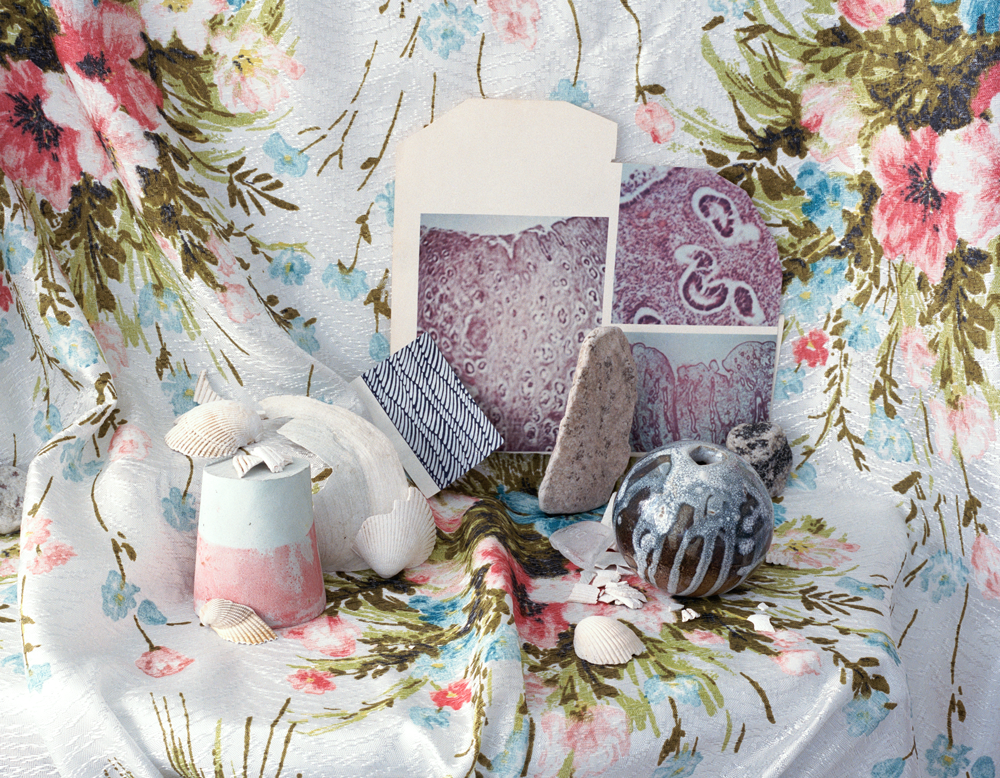There used to be a pool at Banff’s Cave and Basin Hot Springs. Sulphur-scented and almost perfectly aquamarine, the waters there were used for millennia: first by the Nakoda people who inhabited the region, later by three railway workers who came across the springs, then by floods of tourists. But the pool’s waters host more than humans; the Banff Springs snail also calls them home. And, in 1996, after evidence that human activity was negatively affecting the snail population, the public pool was closed. A snail shut down a popular hot spring in the middle of Canada’s most heavily trafficked tourist destination with an efficacy that most lobbyists can only fantasize about.
Banff brings to mind snow-capped peaks and frosted balsam and yawning valleys, and the triumph of the Banff Springs snail hints at the work that goes into this impression. How carefully this vista is maintained, selected, preserved.
We think of Banff as a landscape, but really it’s a still life.
Fifteen artists spent six weeks this summer considering the still life, art history’s most maligned genre, during a residency at the Banff Centre for Arts and Creativity. Arriving at the Banff Centre, which is a 15-minute walk from downtown, feels like heading off to college, with the nervous anticipation of new friends and routines and work. The campus’s architecture, like much of the building in Alberta and parts of British Columbia, looks vaguely Alpine-inspired with a dash of Pacific Northwest Coast: the primary materials are river rocks and timber. Footwear is stout, food largely free of whole grains. It’s an odd collision of pragmatism and whimsy.
Led by Calgary-based artist Mark Clintberg, the Still Alive residency wasn’t wed to traditional ideas of the still life.
“Participants may engage with the genre’s usual subject matter (dead things, edible things, numismatics, floral, feathered, and furred things, inanimate things, manufactured and commoditized things) or its themes (wealth, abundance, property, duration, mortality, vanity, temperance, pleasure, hospitality, fetishes, and frivolity), but do not necessarily need to make images or arrangements of objects that would typically be defined as still life,” read the program description. The artists took this to heart.
Yoko Inoue’s studio was something of a cabinet of curiosities, filled with arrangements of collected plant stickers, photographs, placemats, bits of plastic plants, all infused with the sweet scent of softening fruit.
Jenny Heishman stacked piles of delicate paper, made with odd cast-off bits of tape and cardboard boxes, in her workspace. Cindy Ji Hye Kim wrapped sculptures around fluorescent lights, hung them from hooks on walls. Evan Halter’s paintings had echoes of the ornamentation of historic painting, but looked nothing like their predecessors.
What does it mean to make a still life now? There were plenty of moments of overlap between the artists, but no overarching consensus.
Regardless of the approach, though, there’s no escaping the genre’s progenitors—the Dutch. The Dutch knew that a still life is more than a collection of objects on a table. The subject matter sits in for a whole system of trade and exploit that makes these objects possible. A still life, really, is a fleet of cargo ships setting out to sea on a canal lined with gabled buildings. It’s ermine-trimmed silk jackets on barrel-chested ambassadors who are leaning, shoulders cocked, on Persian rugs. It’s a cellar of salt from processing plants in Venezuela sat next to lemons from the Mediterranean. It’s the dogged pursuit of empire and commodity, and a total assurance that every ounce of self-made wealth was not merely earned, but ordained.
No one today could possibly, in good conscience, make a still life like that.
On my last night in Banff, I joined the residency’s weekly reading group. It was hosted in a yurt nestled on the edge of the campus, with a view that could pass for a Walt Disney confection. Artists sprawled across large pillows inside the yurt and a plate of lemon-drizzle blueberry muffins was passed around. It was comically idyllic. But as the discussion unfolded, the history of the still life—its colonial heft, its imperialist urges—were raised. How do you work, however experimentally, in a genre so burdened by the weight of its past?
It’s a question I kept returning to after my trip. The animating principle of the Dutch Golden Age was a sense of pride that a country with so little was able to secure so much, and from so many corners of the world. Yet while the Dutch were among the first to build the wealth of a nation on trade, on amorphously creating something out nothing, our own society is a successor to this throne.
In the era of financial capitalism you can forgo the unnecessary inconveniences of objects entirely—simply turn money into more money, all mediating factors eliminated. And if an object must be involved in this process, why not use an artwork? Art has an uncomfortably cozy relationship with speculative markets. Is it a liquid asset or an investment? Who knows, but it’s certainly necessary for a diversified portfolio.
Given the legacies of the genre, and art’s continued status as a plaything of trade’s titans, the ethics of the still life remain fraught. But I keep thinking of the Banff Springs snail—bound up, as it is, in all the murky dealings and odd artifice of Parks Canada, yet somehow managing, for however long, to throw the broader machinations of profit off course.
Maybe if a snail can so thoroughly disrupt a system, a still life can, too.
Caoimhe Morgan-Feir is associate editor at Canadian Art.

 Les sylphides (2015) by Celia Perrin Sidarous, one of 15 participants in the Banff Centre’s 2016 residency Still Alive. Image courtesy Parisian Laundry.
Les sylphides (2015) by Celia Perrin Sidarous, one of 15 participants in the Banff Centre’s 2016 residency Still Alive. Image courtesy Parisian Laundry.







